|
May 12, 2007 -
The Setup Begins
Saturday
morning started early. I was up by 4 AM, unable to
sleep with all the things we had to do running through
my head. Where to start? The list is long.
I got up, made a cup of coffee, and began working on my
computer. By the time the sun came up, I
woke up John and we got busy. The first order of
business was to get the bot out of the "box," or
shipping container that we use for storage and a field
shop. With out a crane, or other heavy lifting
equipment, this was not easy. The DEPTHX probe
weighed over 2000 pounds in its current state, but we
had gravity on our side. A half dozen strong
Mexican ranch hands provided the muscle, and we were
able to roll (I use that term sparingly) it down and out
of the container. It went surprisingly well, and
we moved it under it's shade canopy so John could begin
getting it ready to dive in 3 days.
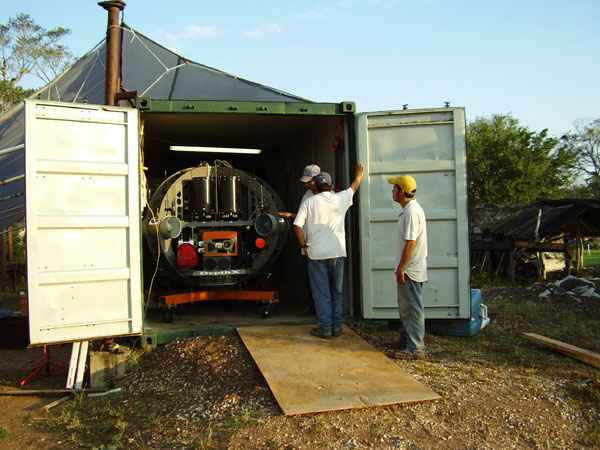
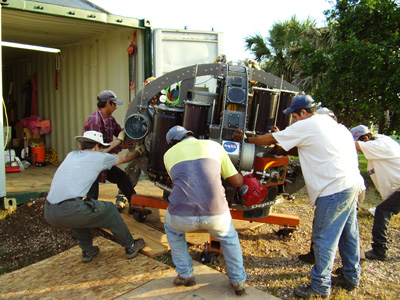
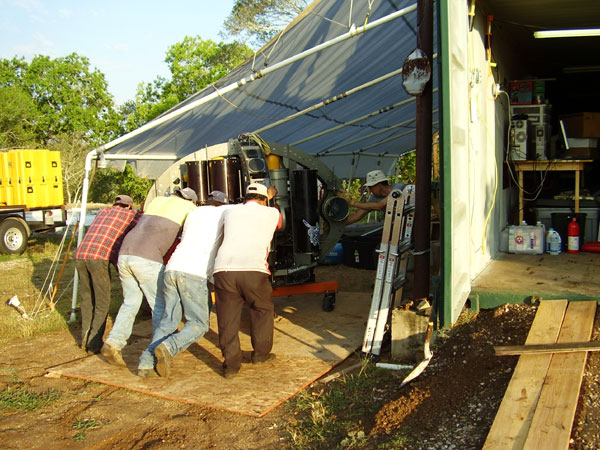
The strong and able ranch hands of Rancho la
Azufrosa help to get the bot out of storage from the
container.
After
getting the bot in a safe place, John and I now started
on our next task, preparing access to Zacatón.
There is a trail on the east side of Zacaton that goes
half-way down the ledge, then ends in a 5 meter drop.
Here we rig an aluminum ladder to climb down to the next
ledge which is just above the water. We tied
safety ropes to help keep people from slipping over the
edge, and also set up a pulley system to lower and raise
equipment down the the water's edge. At this
location, we have a 10' x 16' floating platform, which
was built for the May 2005 Drop Sonde tests. This
floating platform will serve as the mission control for
DEPTHX tests in Zacatón.

John Kerr rigs up the
pulley system used to raise and lower equipment into
Zacatón. The top of the ladder used to climb
down into Zacaton can be seen to his right.
Once we had
access into the cenote ready to go, we began hauling and
lowering equipment and supplies down to the platform.
However, there was one additional task that we had to
get done before we could start operations on May 15.
The floating grass islands, called "zacate," had to be
secured to a wall so they would not float into the bot
while we are conducting tests throughout the week.
We have done this "corralling of the zacate" before, and
you have to wait until the wind pushes them to the
northeast corner and then loop a rope around them.
There was one "straggler" mini zacate that made it out
of the loop, so John had to use his kayak like a tugboat
to push it back into the corral. We got them tied
off into their resting place for the next week until
they are once again free to roam the waters of Zacatón.
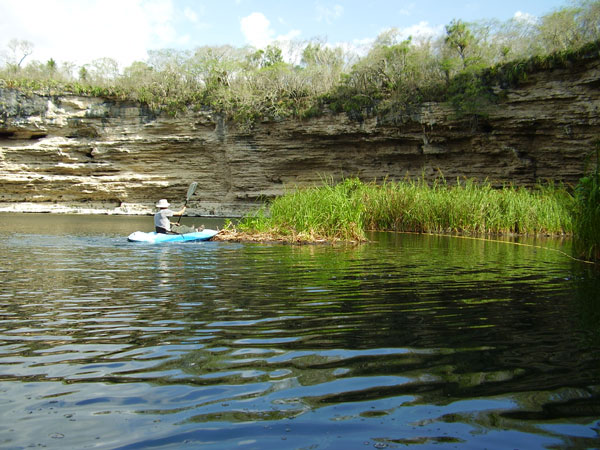
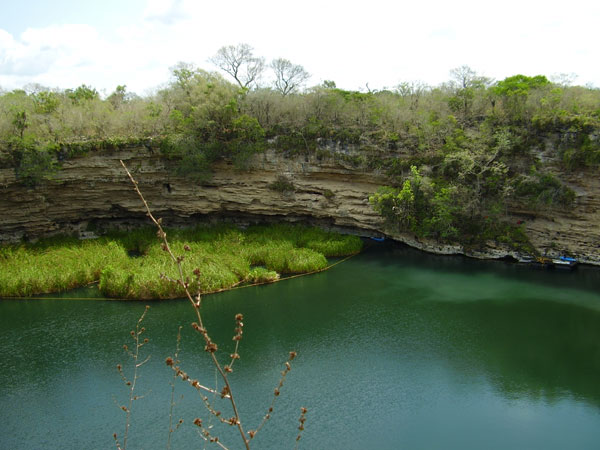
Top photo: John Kerr pushes a loan straggler
zacate into the corral with all the other floating grass
islnads. Bottom photo: John makes the final
tie-off on the zacate corral. Our floating
platform and two other kayaks can be seen just to the
right of the zacate.
A little
after noon on Saturday, the crew from Aquila showed up.
This is the company providing the crane service to get
the bot into and out of Zacatón, Poza Verde, and Caracol.
A convoy of 4 trucks showed up: The 60-ton crane
to be used at the cenotes, a 11-ton crane used to move
rigging for it's bigger brother, a fuel truck carrying
diesel, and the manager's truck. After several
hours of discussing the site requirements and visiting
all the cenotes, they moved the 60-ton crane to the edge
of Zacatón. The jib was added to the
extendable boom, and they made several test drops into
the cenote to check the reach. Everything worked
well, and we are now set to get the bot wet as soon as
it is ready.
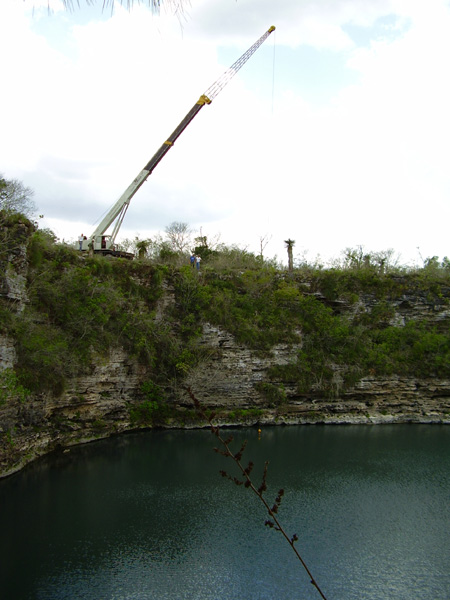
The 60-ton crane
positioned at the edge of Zacatón. Rancho la
Azufrosa owner, Alejandro Davila can be seen standing at
the lip of the cenote.
The rest of
Saturday was spent at the ranch house and field shop
continuing with the many preparations. John spend
his time getting the bot ready to go. The
batteries had to be re-installed first, then we could
power up the system. There were some minor
problems with circuit boards on the battery, and John
once again showed his adaptive engineering skills to
solve the problem and get the bot up and running.
He was up 'til nearly midnight before packing it in and
getting some rest for yet another day of fun in the
Mexican sun.
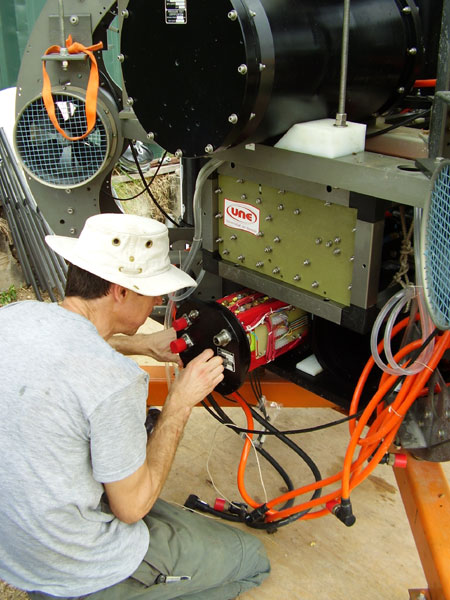
John Kerr installs one
of the two batteries into the DEPTHX probe.

Closing puppy shot
[zacaton/DEPTHX/footer/footer2.htm] |